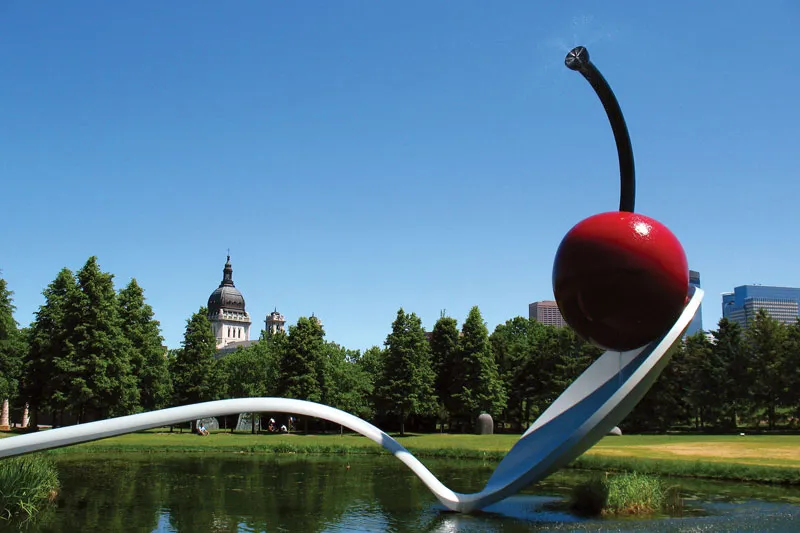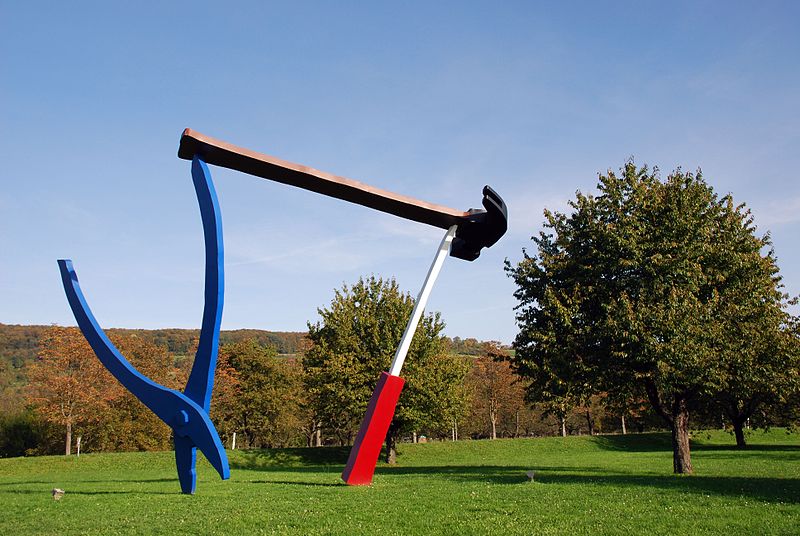The Swedish born artist, Claes Oldenburg (1927- 2022), began as a painter and general performance artist right before he phathomed with resources and varieties that took him to sculpture. As a issue of fact, his early strategies on monumental sculpture were being initially conceived as a series of drawings andwatercolours that he called Colossal Monuments.
In spite of Oldenburg´s Art remaining categorized as Pop art a detour described his possess particular design and style: reproduction was replaced by monumental.
1. Claes Oldenburg is ideal recognized for his large-scale general public sculptures, but you in all probability did not know he started out as a painter and performance artist. In fact, some artwork historians and critics has named it as a “Sculptor who moves between functionality and graphic art”

Claes Oldenburg with Giant Toothpaste Tube (1964), 1970.
Foto: Keystone/Hulton Archive/Getty Visuals
2. Oldenburg treats his get the job done as a totality in which important themes and motifs interweave in a variety of media. He has created a radical contribution to the heritage of sculpture by rethinking its elements, kinds, and matter matter.
2.1. Both equally his performances and paintings are intently associated with his function in sculptures as we are about to see.
3. When he moved to New York in 1956, he turned fascinated with the road lifestyle: keep home windows, neon lights, grafitti, and even trash. It was the sculptural alternatives of these objects that led to a change in interest from portray to sculpture.
4. In fact, his early ideas on monumental sculpture were being to start with conceived as a series of drawings and watercolours that he termed Colossal Monuments, and several of them remained unbuilt.
5. Around the 60s, he made The Retail outlet, a assortment of painted plaster copies of foods, clothes, jewelry, and other products, with which he commenced checking out materials, scale, forms, etc.
6. At the exact time, he started generating a sequence of happenings for which he created huge objects created of cloth stuffed with paper or rags. Later on, he combined his operate with The Retail store and his happenings, and exhibited enormous canvas-protected, foam-rubber sculptures of an ice-cream cone, a hamburger and a slice of cake.
7. That is how he began with his very popular soft sculptures: by translating the medium of sculpture from difficult to soft, Oldenburg collapsed reliable surfaces into limp, deflated objects that had been subject matter to gravity and possibility.
8. Oldenburg was far more fascinated in banal merchandise of purchaser and day-to-day lifestyle, in component motivated by the statements of happening and his lifetime in NY, which led him to be considered as an legendary artist of the Pop-art motion.
9. Because the 80s, Oldenburg started doing the job on commissions for public spaces or establishments. Some of his most well-known sculptures were created close to this time, these kinds of as Spoonbridge and Cherry, Dropped Cone, Mistos (Match Cover) and Shuttlecocks, between some others. All of these sculptures ended up created in collaboration with impartial critic and curator Coosje van Bruggen

Spoonbridge and Cherry, sculpture by Claes Oldenburg and Coosje van Bruggen, 1985–88 in the Minneapolis Sculpture Backyard of the Walker Art Center, Minneapolis, Minnesota.
Foto: © Michael Rubin/Shutterstock.com
10. His function frequently disrupts the operation of common objects—challenging our perceptions and unsettling our routines.Famous for their exaggerated scale, daring hues, and daring playfulness, Oldenburg’s sculptures stand out as a provocative mix of the ubiquitous and the unruly.

Graphic: Creative Commons Attribution-Share Alike 3. Unporte

